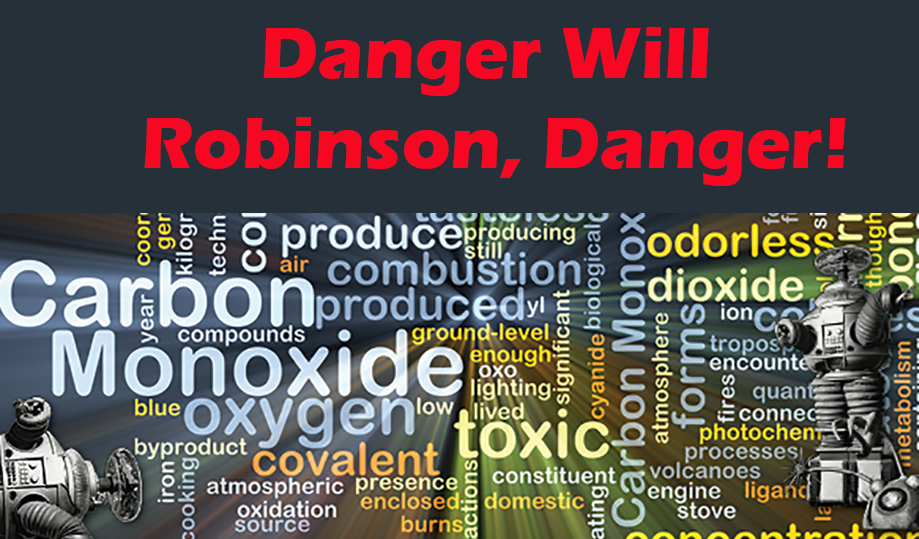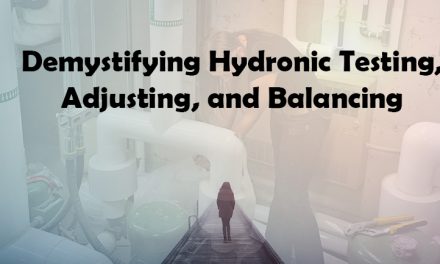I ‘m not sure if they still show reruns of ‘Lost in Space (ncilink.com/DangerWR)? ‘ a 1960s era science fiction television series about a family who crashed their spaceship on an unknown planet.
Whenever there was imminent or pending danger, this family’s robot, aptly named ‘Robot,’ would warn them by waving its silly arms while spinning around and saying ‘Danger! Danger!?
So, what does this have to do with the HVAC Industry? It reminds me of the need we have for some kind of warning in our homes and workplaces when imminent danger is afoot.

We might not have a robot or droid to do this, but today we do have the tools to help avoid harm or pending danger for ourselves and our customers. A personal carbon monoxide (CO) monitor and the power of observation are the tools I would like to discuss.
Whenever providing service for a customer, especially on the combustion side, we must be aware of our environment and surroundings. Even then we can be caught by surprise.
Following are four cases I experienced over the years to demonstrate what I’m talking about.
Case 1: The Danger of A Misbehaving Water Heater
In the early 1980s, I entered a 48-unit apartment building basement with a contractor to do a combustion test and energy audit on their boiler and propose a possible upgrade. During this time, the first digital combustion analyzers appeared in the market and were quite expensive. So, everyone borrowed mine, meaning they also borrowed me.
I placed my combustion analyzer on the floor (they weren’t exactly handheld back then, weighing in at 45 lbs.), turned it on to warm up, and then I glanced around the room. A good 50 feet from the boiler was a commercial, tank type, water heater. It was firing. I was sure because flames shot up the outside of the water heater.
This isn’t normal. I tapped the contractor on the shoulder and told him we needed to check it out. His initial comment was he wasn’t here to look at the water heater, but once I picked up my analyzer and told him I was leaving, he changed his mind.
We did a combustion test on the water heater and the CO was over 5000 ppm and spilling into the basement. After inspecting the water heater, we found it to be 90% plugged with soot. Despite this and the fact that little was going up the flue, the draft in the flue was -.05° W.C.
This is a good indication that the flue is functional and there is plenty of combustion air. So why was it so full of soot? It is hard to say how many people living in this apartment were getting sick, or for how long. Of course, these are things we discuss with the owner or property management company.
The contractor ended up with an $800+ unexpected repair and the water heater didn’t blow up, catch on fire, or poison us while we were there.
Case 2: Beware of Air Grille Location Danger

In another example, I joined a different contractor to conduct combustion tests on some high school boilers. They were running safely with low CO, but were not really efficient. Suddenly, a personal CO tester that I brought into the room started beeping with high readings.
This was an analog meter with a needle, and it was pointing to Run or Die! Several of us were already feeling light-headed. We shut off the boilers and ran! Where was the CO coming from? The boilers weren’t making it, plus testing verified they were venting just fine.
It was around 45’F outside. We went out for fresh air and noticed buses were idling in the parking lot, close to the building, getting ready to pick up the school kids at the end of the day.
One of the buses was idling less than three feet from the combustion air grille going into the boiler room and its exhaust fumes were heading in that direction.
By the way, there were also classroom windows just above that grille. We ask the driver to move and alerted the school maintenance department to add some ‘NO IDLING’ or ‘NO PARKING’ signs in this location.
I wonder if this ever affected school kids. Would I be writing this if there hadn’t been a CO detector checking the room?
Case 3: The ‘Migration? Affect
Another situation occurred during a visit to an industrial plant. The team there just wanted to see a demonstration of a combustion analyzer. I didn’t have a personal CO monitor to use at this location.
I turned the combustion analyzer on for its 60-second warm-up and calibration. When completed, the screen flashed ERROR-CO AMBIENT.
This meant the CO in the boiler room was more than 100 ppm. We shut down the boilers and the room ventilated as we waited outside.
The next time, before entering, we warmed up the analyzer outside the room, so we could be measure CO immediately upon entry. We found reduced levels and the area was safe to enter. Then we fired up the first boiler and began testing.
The CO in the flue jumped to over 3,000 ppm very quickly, which meant it was out of adjustment. It was a sealed flue with plenty of draft and no apparent leaks through gaskets or access panels. However, the CO in the room started to build up again. Where was it coming from?
Click Below for the Next Page













Recent Comments